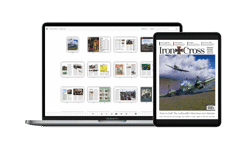According to the first six-month results from MPA's new Magazine Media 360 report, the combined monthly gross audience for 145 magazine brands (across 30 companies) rose 10.1%, to 1.6 billion between August 2014 and January 2015. In this year's first quarter, combined gross audience rose 10.2% vs the year-ago quarter, to 1.73 billion.
Average mobile web and video audiences were up 83% and 58%, respectively, in the sixth-month period, and up 65.3% and 14.4%, respectively, in Q1. However, audiences for print and digital editions (reported together) and for desktop / laptop web viewing, were each up just 1% in the six months and flat (up 0.2% and 0.4%, respectively) in Q1 2015.
Aggressive expansions of native advertising, video and other brand extensions are certainly driving new revenue. Still, for many magazines, digital ad revenue gains aren't yet outpacing print ad revenue declines. According to Standard Media Index, ad spending on US print magazines declined 7% in this year's first quarter (total US ad spending rose 1%). Nor is revenue from digital magazine circulation sales, at least among the large, advertising-dependent publishers, meaningfully offsetting newsstand losses – which in 2014 were exacerbated by the demise of the major wholesaler Source Interlink (-11% in dollars, -16.7% in units).
Time Inc's print and other non-digital advertising revenues declined 3% to $1.48 billion in 2014. Digital ad revenue grew 6% to $298 million, but still accounted for a relatively modest 17% of total ad revenue of $1.78 billion, which was down by $32 million, or 2%, vs 2013. Circulation revenue declined by $34 million, or 3%, including a $33 million or 8% decline in newsstand sales (to $89 million) and a $5 million or 1% decline in subscription sales (to $716 million). Meanwhile, at Meredith Corp, despite several digital property acquisitions and added revenue from taking over the business side of Martha Stewart Living's magazines and sites, the National Media Group (home of its magazines) saw total revenue decline 2.8% and circulation revenue decline 7.6% in the first nine months of its fiscal, ending March 31. The group's ad revenue was basically flat, although digital ad revenue grew 60% in Q3, to account for 21% of its total ad revenue.
As print newsstand declines have worsened, publishers have met their circulation guarantees to advertisers in large part by increasing use of the relatively cheap, rapidly-deployable verified non-paid, partnership, sponsored and combination sources reported in Paragraph 6 of the Alliance of Audited Media (AAM) statement. But this has limits: media buyers won't pay for Paragraph 6 circulation exceeding what they deem to be "acceptable" levels.
Digital edition sales
Publishers initially hoped that digital magazine editions would not only present an economical solution to their rate base challenges, but generate substantial consumer revenue. Unfortunately, as in the UK, US digital magazine sales have been seriously disappointing. According to The New Single Copy's John Harrington, digital edition subscriptions accounted for just 3.5% of total circulation for all audited (AAM and BPA) magazines in second-half 2014. In fact, recent analyses by TalkingNewMedia and Next Steps Marketing have confirmed that among titles with the largest digital circ volumes to date, the overall numbers are now actually declining due to declines in digital subscriptions.
The big publishers that own Next Issue Media – the digital newsstand that works on a Netflix-like model – are now determined to jump-start this so far underwhelming investment. Launched in 2009, the site, which offers about 150 magazines (not all from NIM owners), had 150,000 subscribers as of December 2014, and is still in the red. But Time Inc, Condé Nast, Hearst Magazines, Meredith and Canada's Rogers Media have secured $50 million in financing from Kohlberg Kravis Roberts, to be used to greatly pump up the so-far modest marketing for NIM. They're also in the process of changing the venture's CEO.
NIM's offer: For $9.99 per month, consumers can download the issues of any or all of the participating monthlies; for another $5, they also get access to the weeklies. Here, there's no need to download an app for each title. Publishers are paid by how much time consumers spend reading their magazines. Perhaps this model can overcome typically dismal discoverability and open rates.
For AAM, these copies count as single-copy digital sales. And the NIM push is showing some results. According to analyses in NSC, in 2014's first half, digital copies accounted for 7.2% of total single copies by issue, and 5.8% of total single copies for the period. By the second half, those percentages were 11.2% and 7.6%, respectively.
Although publishers are receiving fractions of these monthly user fees, the economics presumably work (or are hoped to work) based on the volumes, the auto-renewal terms – and the value of these copies supporting advertising rate bases and digital audience numbers.
Might bricks-and-mortar retailers that have, with few exceptions, continued to support the (still-profitable) magazine category, despite unit declines and 2014's channel disruption, be alienated by this push to offer access to digital issues for pennies, versus the average $4 print cover price (and $10 or $12 bookazines)? Publishers say this shouldn't be a problem, since the NIM model attracts new prospects rather than cannibalises print newsstand buyers, and the not-yet-revealed targeted marketing strategy is designed to do the same.












